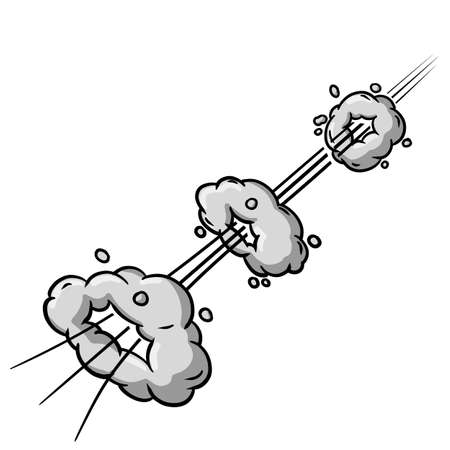Introduction to Wet Fly Swing
Imagine standing at the edge of a gently flowing river, fly rod in hand, sharing a quiet moment with your child or a loved one. The wet fly swing is more than just a fishing technique—its a living tradition that connects generations and brings families closer to the natural world. Rooted deeply in American fly fishing history, the wet fly swing was once the go-to method for anglers exploring the abundant streams of the Northeast and Rockies. Over time, while new techniques have emerged, the fundamentals of the wet fly swing remain unchanged, making it both nostalgic and surprisingly modern. By learning this method, families not only discover how to catch fish but also how to appreciate the rhythm of nature together. This classic approach offers an inviting gateway into fly fishing, blending historical roots with present-day experiences that foster curiosity, patience, and shared adventure along America’s rivers and lakes.
Traditional Technique Explained
Learning the wet fly swing together as a family is more than just mastering a classic fishing technique—it’s about building memories by the water. The wet fly swing has been a go-to method for generations of American anglers, and its charm lies in its simplicity and effectiveness. Here’s how you and your child can experience this tradition, step by step, with practical tips and a friendly approach.
Step-by-Step Method for Wet Fly Swing
- Choose Your Essential Gear: Start with a 9-foot, 5-weight fly rod, a floating or intermediate fly line, and a selection of soft-hackle wet flies. Don’t forget polarized sunglasses for safety and better visibility!
- Read the Water: Look for riffles or seams where faster and slower currents meet—these are prime spots where trout feed just below the surface. Encourage your child to spot bubbles or changes in water color as clues.
- Make the Cast: Stand side-by-side with your kid. Cast slightly downstream at about a 45-degree angle. Let the current carry your fly across, allowing it to swing naturally in the flow.
- Follow the Swing: Keep your rod tip low and follow the path of your fly with gentle hand movements. Teach your child to feel for subtle tugs—sometimes fish strike softly!
- Retrieve and Repeat: Once the swing completes directly below you, retrieve slowly or lift the rod for another cast. Celebrate small successes—each cast is an adventure.
Understanding Fish Behavior Together
This is a great time to ask questions like “Where do you think the fish are hiding?” or “Why might they be near those rocks?” Explaining that trout often wait in slower water to ambush food helps kids connect with nature and learn observation skills.
Family-Friendly Gear Checklist
| Item | Description | Kid Tip |
|---|---|---|
| Fly Rod & Reel | 9-foot, 5-weight combo | Lighter rods are easier for little hands |
| Wet Flies | Soft hackle patterns (sizes 12-16) | Let kids help choose colors! |
| Sunglasses | Polarized for safety & sighting fish | Pint-sized frames available at most shops |
| Waders/Boots | Keeps everyone dry and comfy | Look for youth sizes with good grip |
| Treats & Snacks | Adds fun to fishing breaks | A special treat makes any trip memorable! |
Parent-Kid Pro Tip:
If your child hooks into their first fish on the swing, let them lead—but be ready to lend a helping hand. Celebrate every catch, big or small. These shared moments will make fishing together a cherished family tradition.

3. Modern Applications and Gear Innovations
Today, the art of wet fly swing is more accessible and exciting than ever before, thanks to cutting-edge technology and innovative gear designs. Fly fishing companies have embraced lightweight materials, making rods easier for anglers of all ages to handle—even kids can join in without feeling weighed down! Modern reels offer smooth drags and quick retrieves, perfect for keeping up with energetic fish in fast-moving American rivers or sprawling lakes. Advanced lines and leaders are now designed specifically for swinging wets, allowing flies to stay in the strike zone longer and present more naturally to curious trout or bass.
Waders and boots have also seen major upgrades. Breathable fabrics keep you dry and comfortable all day, while grippy soles help everyone stay safe on slippery rocks—great for family adventures where little ones want to get their feet wet too! Tippet materials are stronger yet nearly invisible, boosting your chances of landing a trophy fish without spooking it.
On top of the gear itself, digital resources like apps and online communities make learning the wet fly swing technique easier than ever. You can watch real-time tutorials, connect with local fishing groups, or even find maps highlighting kid-friendly fishing spots across the U.S. All these advances come together to create a welcoming environment where parents and children can share unforgettable moments on the water, blending tradition with modern fun.
4. Family-Friendly Tips for Success
Introducing your kids to the wet fly swing is a wonderful way to blend tradition with quality family time outdoors. This technique, while classic, is accessible to anglers of all ages and offers countless opportunities for learning and bonding. Here are some practical tips and real-life stories to help make your family’s experience successful, safe, and truly memorable.
Patience is Key
When teaching children the wet fly swing, patience goes a long way. Kids may not pick up the technique right away, and that’s okay! Start with simple casts and short practice sessions. Celebrate their small victories, whether it’s making a good cast or simply enjoying the sound of the river together. Remember, the goal is to foster a love for fishing—not perfection on day one.
Focus on Safety First
Safety should always be at the forefront when fishing as a family. Make sure everyone wears properly fitted life jackets near water, especially younger kids. Teach them about slippery rocks and how to spot deeper currents. Pack a small first aid kit just in case, and discuss what to do if someone gets a hook caught or needs help. The table below offers a handy safety checklist you can review before each trip:
| Safety Tip | Description |
|---|---|
| Wear Life Jackets | Ensure everyone has a well-fitted life jacket when wading or boating. |
| Supervise Constantly | Always keep young children within arms reach near water. |
| Sunscreen & Hats | Protect against sunburn with SPF and wide-brimmed hats. |
| Proper Footwear | Non-slip shoes help prevent falls on slick rocks or muddy banks. |
| First Aid Kit | Carry basic medical supplies for scrapes or minor injuries. |
Make It Fun and Memorable
The best part about introducing your family to the wet fly swing is creating memories that last. Bring along snacks, take plenty of photos, and turn “fishless” days into adventures by exploring the riverbank or skipping stones. One dad from Oregon shared how his daughter’s first trout wasn’t just about the catch—it was about her laughter echoing over the water as they both tried (and failed!) to net the fish together.
Involve Kids in Every Step
Let your children help select flies, tie knots (with your guidance), or carry their own gear. This builds confidence and makes them feel invested in the outing. Even if they’re more interested in collecting bugs or watching ducks than casting lines, it’s all part of the experience!
Quick Tips for a Great Day Out:
- Pick shorter trips suited to your child’s attention span.
- Praise effort over results—every try counts!
- Wrap up before anyone gets tired or cranky for positive associations.
- Share stories about your own first fishing adventures—they’ll love hearing them.
The wet fly swing isn’t just an angling method; it’s an invitation to slow down, learn together, and enjoy nature as a family. With patience, preparation, and a spirit of fun, you’ll create traditions that will be cherished for years to come.
5. Best American Waters for Wet Fly Swing
One of the best parts about learning the wet fly swing is discovering new waters together as a family. Across the United States, there are countless streams, rivers, and even urban waterways where you can practice this timeless technique.
Classic Trout Streams
The first places that come to mind are those legendary trout streams that have become part of American angling lore. Rivers like Montana’s Madison and Yellowstone, Pennsylvania’s Letort Spring Run, and the Big Horn in Wyoming are just a few classic options. These streams offer healthy populations of wild trout and plenty of room to perfect your wet fly presentation—plus, the scenery is breathtaking for families who love the outdoors.
Accessible Urban Fishing Spots
If you’re looking for something closer to home or don’t have time for a big trip, many cities across the country have urban fishing opportunities that are perfect for families. Rivers like the Chattahoochee in Atlanta, the Truckee flowing through Reno, or even stretches of the Charles River near Boston all support thriving fish populations and can be great spots to try out your wet fly swing skills. It’s an awesome way to introduce kids to fishing without having to travel far.
Lesser-Known Gems
Sometimes the best memories come from exploring lesser-known waters together. The Driftless Area in Wisconsin and Minnesota has hundreds of spring creeks teeming with trout, while California’s Upper Sacramento River offers miles of accessible water for swinging wets. Don’t overlook tailwaters below dams or small tributaries—these often hold surprising numbers of fish and provide a more intimate setting for family adventures.
Family-Friendly Features
When choosing a destination, look for locations with easy access, safe wading conditions, and nearby amenities like picnic areas or hiking trails. Many state parks and national forests also offer educational programs or ranger-led activities related to fishing—making it easy to turn your wet fly outing into a full day of family fun.
A Shared Adventure
No matter where you live or what level of experience your family has, there’s a waterway near you that’s perfect for practicing the wet fly swing together. Exploring these prime locations not only helps everyone improve their technique but also creates lasting memories—sharing laughs on the riverbank or celebrating that first catch will quickly become part of your family story.
6. Sharing the Experience: Stories and Lessons Learned
If you ask families and fly fishing enthusiasts about their favorite memories on the water, many will tell you it’s not just about the fish—it’s about the moments shared and lessons learned along the way. The wet fly swing has a special way of bringing people together, whether it’s a child’s first trout or a seasoned angler rediscovering an old technique with a fresh twist.
A Family Bond Forged by the River
One parent recalls teaching their daughter the wet fly swing on a misty morning in Montana. At first, there was frustration as she struggled to get the rhythm right. But after some encouragement and laughter (and a few tangled lines), her persistence paid off with her very first rainbow trout. “It wasn’t just about catching fish,” the parent shares, “it was about seeing her confidence grow and knowing we created a memory she’ll never forget.”
Passing Down Traditions
For many, using the wet fly swing is a way to connect generations. Grandparents tell stories of learning from their own parents, then passing down that gentle arc of line and anticipation to their grandkids. In these moments, fishing becomes more than a hobby—it’s a living tradition shaped by both history and innovation.
Lessons from Mistakes and Successes
Not every trip ends with a full creel, but even those quiet days offer valuable lessons. Enthusiasts talk about patience—how slowing down to perfect their technique often led to unexpected success. Others mention adaptability: sometimes switching up patterns or tweaking their presentation made all the difference. And almost everyone agrees—the best catch is sometimes the story itself.
Ultimately, sharing experiences with the wet fly swing creates space for growth, connection, and joy in nature. It reminds us that while techniques may evolve, the heart of fly fishing remains rooted in shared adventure and lifelong learning.
7. Conclusion: Passing Down the Tradition
The wet fly swing isn’t just a fishing technique—it’s a thread that weaves generations of American anglers together. From grandfathers teaching their grandkids the subtle art of reading water, to parents reliving their own childhood memories along riverbanks, the wet fly swing has been a rite of passage and a foundation for countless family stories. Reflecting on its place in our angling culture, we see how each cast is more than a pursuit of fish; it’s an opportunity to connect, share, and grow together.
This tradition is about more than catching trout or steelhead. It’s about passing down patience, respect for nature, and an appreciation for quiet moments spent outdoors. Modern innovations have given us new flies and gear, but the heart of the wet fly swing remains unchanged—a beautiful blend of skill, intuition, and shared experience.
As you master the swing and make it your own, think about the memories you’re creating. Maybe you’ll teach your children how to mend a line or show a friend how to feel for that gentle tug signaling a take. These moments become stories that echo through families for years to come.
So next time you’re waist-deep in a cool river, rod in hand, consider inviting someone along. Pass on what you know, listen to old tales from seasoned anglers, and let your adventures inspire the next generation. With every shared trip and every whispered tip passed between family members or friends, you help keep this cherished American tradition alive—ensuring the legacy of the wet fly swing continues to thrive for many seasons ahead.


